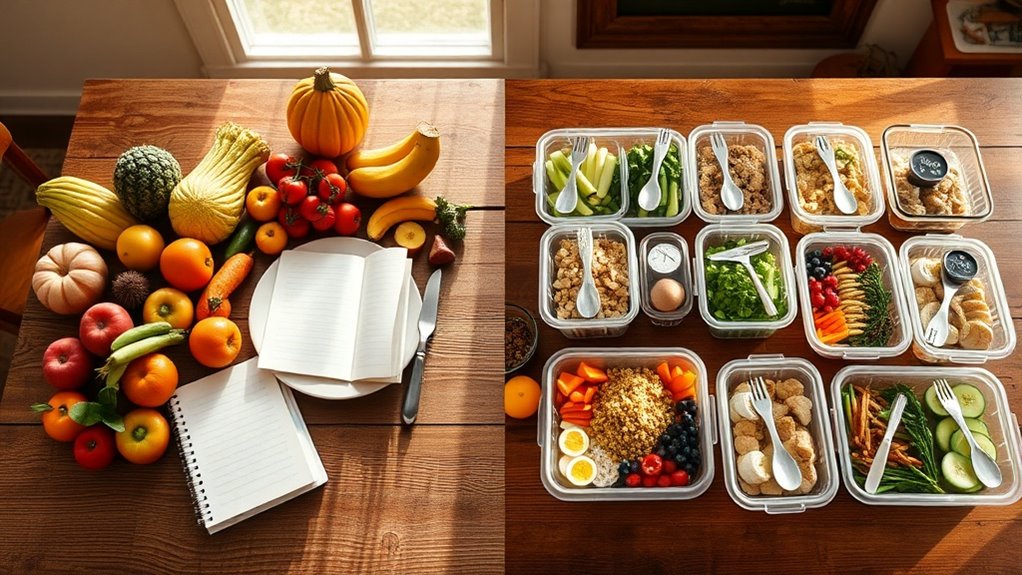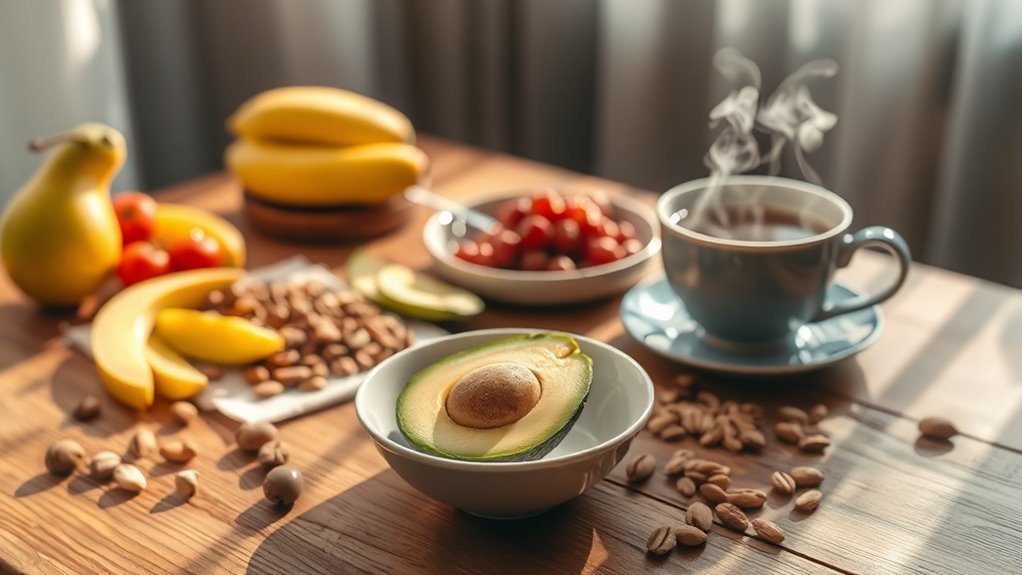Trick Your Brain Into Eating Less Without Feeling Hungry
If you’ve ever wished you could eat less without that constant gnawing hunger, you’re not alone. Many struggle with portion sizes and cravings, but there are effective ways to trick your brain. By making a few simple adjustments to your eating habits and environment, you can enjoy your meals while consuming fewer calories. Curious about how to implement these strategies and find a healthier balance? Let’s explore some practical techniques.
Understanding Hunger: The Science Behind Our Cravings
When you dive into the science behind our cravings, it’s clear that hunger isn’t just a simple signal from your stomach.
It’s a complex interplay of hormones, emotions, and even social influences that can shape what you crave and when you feel it. To truly understand your hunger, you need to tune into your body and practice mindful eating.
This means savoring each bite and paying attention to your body’s signals, rather than just eating on autopilot. When you focus on the flavors and textures of your food, you’re more likely to recognize when you’re satisfied. This awareness fosters a sense of belonging with your body and its needs, helping you develop a healthier relationship with food. By incorporating mindful eating techniques, you can enhance your dining experience and support your weight loss goals. So, the next time you feel hungry, take a moment to check in with yourself and embrace mindful eating—it might just change how you experience your cravings.
Portion Control Techniques to Trick Your Brain
Mindful eating not only helps you recognize your body’s signals but also sets the stage for effective portion control techniques that can trick your brain into feeling satisfied with less food. Here are some strategies to help you enjoy your meals while controlling portions:
| Technique | Description |
|---|---|
| Use Smaller Plates | A smaller plate makes portions appear larger, tricking your brain into feeling satisfied. |
| Pre-Plate Snacks | Portion out snacks in advance to prevent mindless eating straight from the bag. |
| Slow Down | Take your time eating; it takes about 20 minutes for your brain to register fullness. |
| Drink Water First | Having a glass of water before meals can help you feel fuller and reduce overall intake. |
Additionally, focusing on nutrient-dense foods can enhance satiety and help you feel satisfied with smaller portions.
Mindfulness Exercises for Better Eating Awareness
Eating with awareness can transform your relationship with food, making it easier to recognize hunger and fullness cues. Start by slowing down during meals. Put your fork down between bites, savoring each mouthful and appreciating the flavors and textures. This simple act can deepen your connection to what you’re eating.
Try to eat without distractions. Turn off the TV, put your phone away, and focus solely on your meal. This practice helps you tune into your body’s signals, allowing you to notice when you’re satisfied.
Another helpful exercise is to check in with yourself before eating. Ask, “Am I really hungry, or is this just habit?” This can shift your mindset and enhance awareness. Practicing mindful eating can significantly improve your ability to listen to hunger signals.
Lastly, consider reflecting on your meals afterward. Journaling about your experiences can reinforce positive habits and deepen your understanding of your relationship with food.
Environmental Adjustments to Reduce Food Intake
While it’s easy to overlook the impact of your surroundings on food choices, making simple environmental adjustments can significantly help you eat less.
Start by rearranging your kitchen. Keep healthy foods at eye level and stash away snacks in opaque containers; out of sight often means out of mind. When dining, use smaller plates and bowls—this trick can make your portions look larger, helping you feel satisfied with less.
Create a designated eating area. This separates mealtime from other activities, allowing you to focus, enjoy, and savor your food. If you’re in a group, try to sit farther from the buffet table or snack station; it’ll reduce the temptation to graze mindlessly.
Lastly, consider the lighting. Softer, warm lighting can create a cozy atmosphere that encourages slower eating and deeper conversations, helping you feel connected while naturally consuming less. Implementing the plate division method can further enhance your portion control and satisfaction.
Embrace these changes, and you’ll find yourself on the path to healthier habits.
Sustainable Eating Habits for Long-Term Success
Creating a supportive environment is just the beginning of your journey toward healthier habits; the next step is to establish sustainable eating habits that stick. Start by focusing on whole, nutrient-dense foods. Fill your plate with colorful fruits and veggies, lean proteins, and whole grains.
You’ll not only nourish your body but also create a sense of belonging with others who share your healthy choices.
Make meal prep a fun, social activity. Invite friends or family to join you in the kitchen, prepping meals together while enjoying each other’s company. This builds accountability and makes healthy eating feel less like a chore.
Listen to your body. Eat when you’re hungry and stop when you’re satisfied. This mindful approach helps you develop a better relationship with food. Additionally, hydration significantly impacts weight loss progress, so make sure to drink enough water throughout the day.




